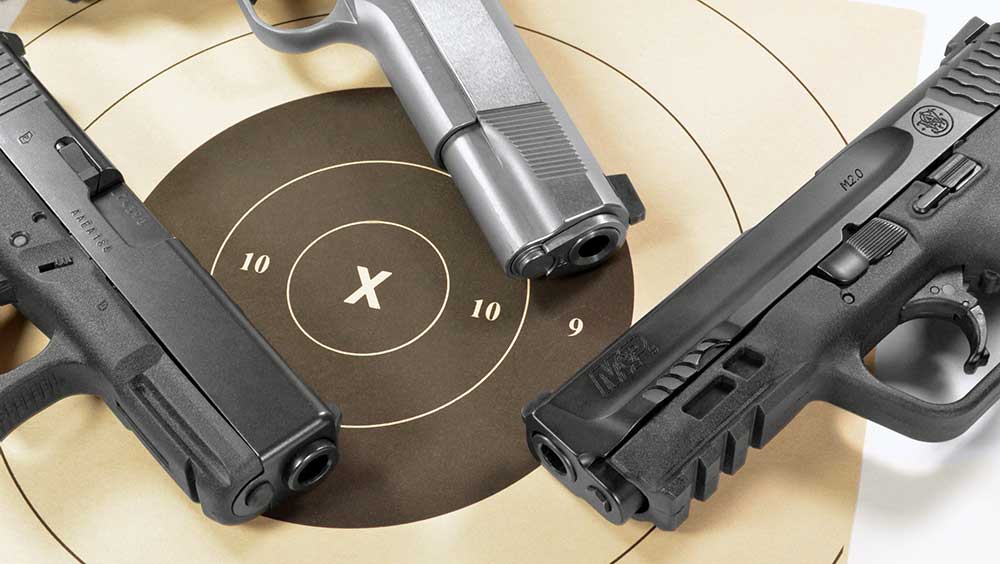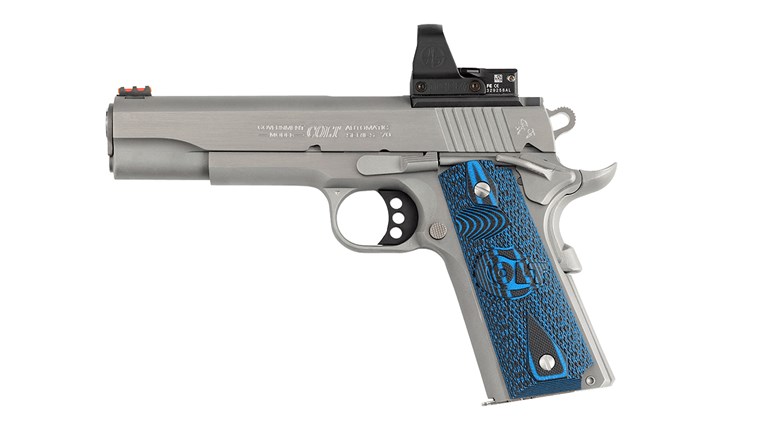
Most ammunition-accuracy tests use one gun. Writers acknowledge that the results are specific to the test gun and the results might not apply to your particular firearm. This is certainly true, but few articles test the same ammo in different guns, so we decided to do just that by comparing the accuracy of 15 different factory loads in three popular guns.
Of course, we know that all guns aren’t equally accurate, but the results of our testing demonstrates this truth with a fairly broad sample of ammunition. In addition to not all guns being equally accurate, some guns have preferences and shoot some ammunition well and some poorly, while another gun might have different preferences. Why would guns have different preferences?
Several things contribute to this. Differences in barrel design might be one reason. For example, they have different types of rifling—land-and-groove versus polygonal—the number of rifling grooves, the rate of twist, i.e. 1:32, 1:16, 1:10, etc. Each of these variables can affect how the bullet is stabilized. In additional, some guns have tight tolerances, which enhances accuracy.
Bullet design can also be important. Bullets vary in type and construction—swaged, cast, plated, jacketed, frangible, and they vary in weight and length which can affect accuracy. Some bullets might be better stabilized by different barrel designs. As you can see, several things can affect how a gun might prefer one type of ammunition over another.
One point to make: In this testing, all we're examining is inherent accuracy across different guns and ammunition types. Of course, there are other variables at play. As we've said, tighter tolerances tend to enhance accuracy, but they can also reduce reliability. Just because a gun is particularly accurate doesn't automatically mean it's the best for any given purpose.
The three different 9mm pistols we used are as follows: a Glock G19 (Gen 3) with a factory 4-inch barrel, a Smith & Wesson M&P9 M2.0 with a 4.25-inch barrel and a hybrid 1911 with a Para Ordnance frame, Caspian Arms slide and 5-inch Kart barrel. The Glock and M&P are essentially off-the-shelf guns. The 1911 is a custom gun but is not a bullseye-quality or match grade gun. The Kart barrel fits the slide well, but there is slop in the slide to frame fit.

The Glock barrel has hexagonal rifling with a 1:9.84-inch twist, the M&P has a land-and-groove barrel with a 1:10-inch twist, and the Kart barrel is land-and-groove with a 1:16-inch twist. That said, this comparison is not appropriate or designed to test the effect of type of rifling or twist rate on accuracy. That’s a different test and would require barrels made with different rifling and twist rates in the same gun or a barrel fixture device.
The guns were mounted in a Ransom Rest to eliminate shooter-induced errors that can degrade accuracy.
Fifteen factory loads were tested, ranging from 115 to 147 grains. Fifty shots (one full box of ammo) were fired into a single group. Firing all 50 shots into one group shows how consistent the ammunition shoots in that gun. After each 50-shot group, the barrel was cleaned before moving on to the next load.
The results show that, like we anticipated, the three pistols were not equally accurate. The 1911 produced consistently smaller groups than the Glock and S&W. Average group size for the 1911 was 3.31 inches. The Glock and S&W averaged 5.77 inches and 5.67 inches, respectively. This puts the 1911’s average group size at around 2.4 inches less than the other pistols. It shot all 15 loads into smaller groups than either of the other two guns. It was the accuracy champ in this comparison, which is far from surprising. In competitions where accuracy is key, the 1911 continues to reign.

The S&W’s average group size was 0.10 inch smaller that the Glock’s, but this barely a measurable difference, so they are virtually equal in this comparison. However, each pistol preferred different ammunition.
The 1911 really liked the Browning 147-grain FMJ load, producing a 50-shot group of 1.91 inches. The ammo it liked the least was the Blazer 115-grain FMJ, with a group of 5.92 inches, over three times larger than the Browning load. Clearly, this gun has preferences.
The Glock also had ammo preferences, with the PPU 115-grain JHP producing a 3.17-inch group. In fact, this was the only load it shot under 4 inches. This Glock really disliked the Winchester 115-grain FMJ load, producing a group that measured 9.38 inches. The Blazer load was close on its heels with a 9.12-inch group. As with the 1911, there is nearly a three-fold difference in group size between the preferred load and the non-preferred load.
The S&W M&P liked the Winchester 147-grain FMJ load, producing a 4.45-inch group, and disliked the Winchester 115-grain JHP load at 6.85 inches. However, it did not show an extreme difference between the smallest and largest groups, like the 1911 and Glock did. While I wouldn’t go so far as to say that the S&W shoots everything the same, it did not have striking preferences or dislikes among the ammunition tested.

Not one specific ammunition shot the best or worst in all three guns. The 1911 loved the Browning 147-grain load. It fared reasonably well in the S&W, but was an average load in the Glock. The Blazer 115-grain FMJ load produced the largest group in the 1911, and it didn’t fare very well in the other guns either but wasn’t the worst in those guns. The S&W disliked the Winchester 115-JHP load the most, while that round did better-than-average in the 1911 and Glock.
So what kind of conclusions can we take away from this test? Principally, it's that individual guns have preferences for what ammunition they prefer. Keep in mind that the Glock results do not speak for all Glocks, nor do the S&W M&P results speak for all M&Ps, and so on. In reality, this compares three specific guns in my possession, and I caution readers against over-interpreting the results. Every gun will perform uniquely, and this test certainly shows that individual guns have unique preferences. Which ammo will your gun like? You’ll have to try several brands to find out. There’s your excuse to shoot more!



































